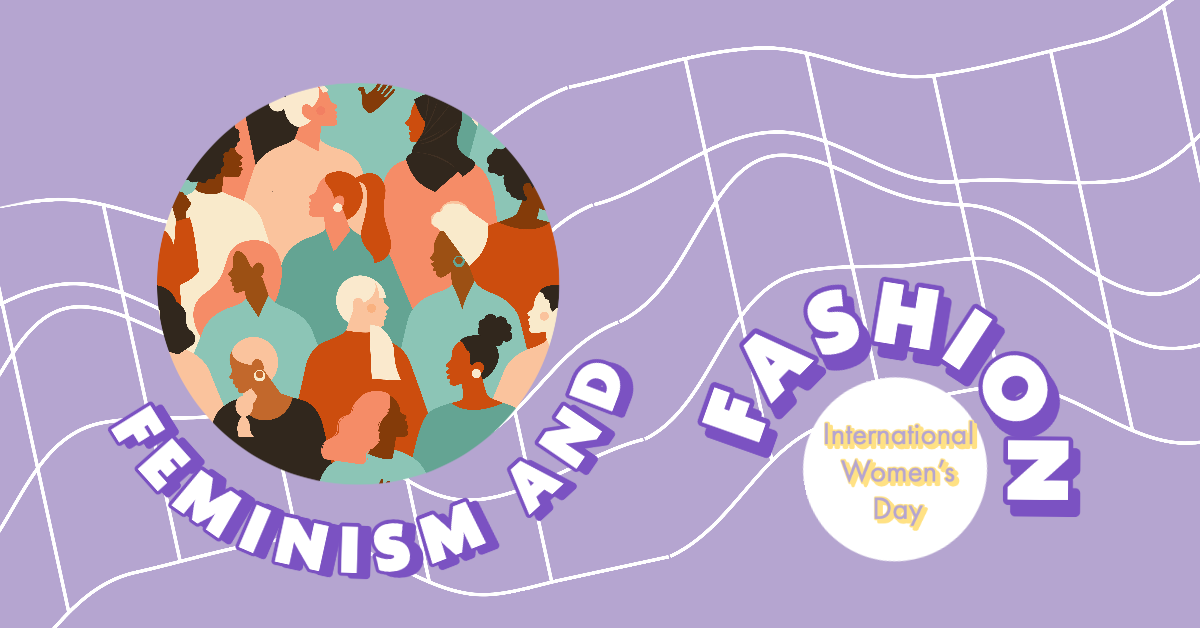By Dayana Soroko, Second year, English
The Croft Magazine // In celebration of International Women’s Day, Dayana explores the relationship between fashion and feminism throughout history and their integrality in encouraging liberation and self-expression.
The history between fashion and feminism has a long and varied past, in which the two have continuously influenced and informed one another.
In 1792 Mary Wollstonecraft wrote what is known as the first feminist text, A Vindication of the Rights of Women, challenging women’s passive acceptance of their fixed roles in society, writing, "I do not wish them [women] to have power over men; but other themselves". Wollstonecraft spurred on a change in ideology, which radiated throughout all spheres of women’s lives, including fashion. Women threw out their restrictive corsets and instead, adopted ‘bloomers’, inspired by the Turkish pantaloons. The term itself was named after women's rights activist, Amelia Bloomer, who was known for advocating the look, and therefore, bloomers became a feminist statement referred to as being the 'first trousers for women'. However, bloomers were mostly rejected from society as they were only adopted symbolically by a large number of feminists until they became an object of fascination and therefore a distraction. Thus, women returned to the traditional dress.
In the 19th century, women were expected to play the role of the inferior to men - this view was actively maintained by all classes. Working women were encouraged into factories during the Industrial Revolution, but shortly following this, they were encouraged back into the domestic sphere by husbands, who realised that as their wives were willing to work for lower wages, they were subsequently taking their jobs. Women of affluent classes dressed up and were treated as ‘child-like dolls’, as a result of males' desire being rooted in infantilisation and a perceived innocence of the woman.
Along with bloomers earlier in the 19th century, later, the 'Rational Dress Movement' was also introduced, which consisted of creating more sensible and comfortable versions of popular fashion garments, for example, the liberty bodice, which aimed to 'liberate' women from the heavy boning and tight lacing of the corset.
With the turn of the twentieth century, Paris became the capital of fashion and luxury. With the emergence of Art Nouveau décor and architecture, the popularity of luxury items did little to promote the feminist cause. However, the styles of hats were changed with the initiative of Coco Chanel beginning to create more simplistic hats in 1910, emphasising the importance of comfort in fashion. The designer shared what could perhaps be interpreted as a feminist quote, “How could a brain function normally under all that?”.
The Suffragettes also utilised symbolism in their clothing, wearing the colours purple, white and green which symbolise purity, hope, and loyalty and dignity. They wore these colours alongside their particularly traditionally feminine dress purposefully, in order to avoid being ridiculed in the satirical cartoons of newspapers for dressing in a masculine manner. Suffragette, Sylvia Pankhurst once remarked, “Many suffragists spend more money on clothes than they can comfortably afford, rather than run the risk of being considered outré, and doing harm to the cause”.
However, 1910s fashion also introduced Paul Poiret's Middle Eastern harem inspired trousers which he brought to the Western world, popularising practicality and freedom of movement, which slowly started to become a priority for women.
The ‘new woman’ in the 1920s emerged post-ww1, wearing dresses that ended just below the knee, sporting short bobbed hair and the newly recreated men’s sailor jackets and pullovers (by Coco Chanel) recreated to for women, introducing a sportier look. This developed further during WW2 where more women entered the workforce, introducing more practical clothing options, such as trousers and durable workwear, also increasing their financial independence, challenging the roles of their husbands when they returned from war.
During the first war free summer in 1946, Louis Réard introduced the bikini to match the liberated atmosphere which belonged to people, which rose in popularity amongst young women, and was seen along most of Europe's beaches in the 1950s, but resisted arriving America until the early '60s.
In the 1960s and '70s, after the second wave of feminism, the roles of women were not the only things that were being radically changed. The term 'Youthquake' coined by fashion editor Diana Vreeland can be used to summarise this period. Society became youth-orientated - rock and roll music such as that of The Beatles and The Rolling Stones took the lead, and drugs and sexual freedom were liberating women. The invention of the contraceptive pill spurred on the sexual revolution, in addition to Mary Quant's invention of the Mini Skirt. Now women had a plethora of choices in their bottom-wear - from maxi, midi, or mini skirts, to jeans or trousers.
In the 1970s and 80s, ‘power dressing’ became popular with women beginning to achieve higher positions in the workforce. This included women wearing suits, matching skirts and jackets with padded shoulders to give a more masculine look. However, the purpose wasn’t to dress as a man, but to give working women a style to make them look professional. Icons such as Grace Jones' androgynous style encouraged empowerment and a redefining of what was deemed as 'acceptable' within female fashion.
With the birth of a new decade came the birth of a third wave of feminism with its own ideas in regards to gender and sexuality in women.
2000s and current day fashion, a current debate is whether you can be a feminist and fashionable simultaneously. A woman’s dress is perhaps more debated now than in previous decades, but a woman’s ability to choose what to wear over the past hundred years shows that the interlink between feminism and fashion has been revolutionary, and is possible to document the emancipation of women by looking back at fashion history and how it has changed.
International Women's Day 2021: celebrating women on campus
TV's most stylish series through the ages
Featured image: Epigram/Morgan Collins
Check out

